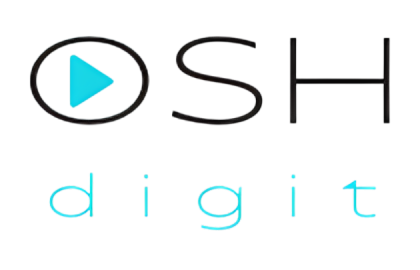Your cart is currently empty!
11. Introduction

The OSHDigit project is an innovative and contemporaneous vision of the learning process and because of that the main objective is the introduction of new methodologies of teaching/learning. This learning concept fits into the teaching-learning model of active or cooperative learning (Lima et al., 2007).
With the objective is developing new and refreshing methods of learning and promoting the development of interdisciplinary action focused on the preparation of quality future professionals of the area through a solid education, OSHDigit based its approach on Project-Led Education (PLE) and/or Project-Based Learning (PBL) for digital teaching.
This methodology reveals positive results and, in contrast to teaching traditional methods, provides an environment in which students are actively involved in the learning process, working simultaneously as a team to solve large-scale open-ended projects, transforming the educational process of learning more interdisciplinary (Powell, 2004; Powell, Peter Weenk, 2003).
This is justified by the synergy of the several engineering contents, experiencing early in the curricular approach to the real context stimulating the skills that need to be developed as a student but as also a professional (Mesquita et al., 2013), in sum, doing becomes trying, interacting with the world and is operated, exploring the connection between the things/knowledge (Dewey, 1916).
Alves et al., (2007) and Helle et al., (2006) describe the following objectives associated with PBL:
- Promotes the learning process centred on the student;
- Teamwork;
- Interdisciplinarity in an integrated way;
- Develops creativity and the initiative spirit;
- Think critically with a view to solving problems;
- Develops Interpersonal communication and project management;
- Really understand the subject matter, rather than just learning by rote;
- Prepares for the reality of the working world.
The positive result of the adoption of this curricular approach is verified by the following studies:
- Lima et al., 2007; Moreira et al., 2011; A. C. Alves et al., 2013; A. C. Alves & Leão, 2015; A. C. Alves & Eira, 2015; A. Alves et al., 2016; A. C. Alves et al., 2015; A. C. Alves et al., 2019; A. C. Alves, Moreira, et al., 2020 and Fernandes, 2021.
The details for the PBL application can also be found on websites linked to the universities of Delaware, Maastricht and McMaster, and San Diego State University (Powell, 2004).
The OSHDigit course will involve the following areas: Ergonomics II; Hygiene II; Safety II; Analysis and Study of Work; Methods and Techniques of Analysis in Ergonomics; Statistics applied to OSH.
-
20. Student’s perception and feedback about the evaluation
The 21st-century competencies are different considering that with COVID-19 digitalization was boosted what brings the necessity to acquire new ones and re-evaluate teaching strategies, particularly because of the unpredictable situations related to relating to those times and the type of teaching context- online (Howe & Watson, 2021). The 4 most reported are: critical thinking/problem-solving; creativity;…
-
21. Resources

Resources can be physical or digital. A set of tools that can be used in the different approaches to problem-solving in the different phases will be supplied. Students should use several reputable platforms to substantiate their research, but they can also use physical resources generally used in interacting with labour environments, like equipment and “paper-pencil”…
-
22. Bibliography

Alves, A. C., & Eira, R. (2015). A aprendizagem implícita do Empreendedorismo no desenvolvimento de projetos interdisciplinares. 8–24. Alves, A. C., & Leão, C. P. (2015). Action, practice and research in project based learning in an industrial engineering and management program. ASME International Mechanical Engineering Congress and Exposition, Proceedings (IMECE), 5–2015. https://doi.org/10.1115/IMECE2015-51438 Alves, A. C.,…
